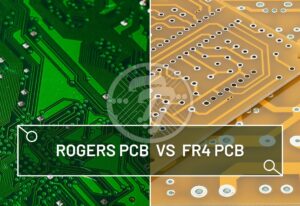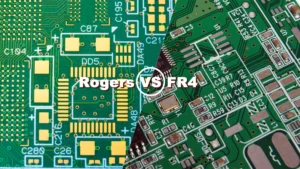It is well known that printed circuit boards play an important role in electronics, so you need to consider how to choose the right material for your PCB manufacturing. In this regard, Guangzhou Jujin Technology can provide you with the lowest cost as well as the best quality PCB manufacturing and high quality PCB assembly. However, there are many different types of PCB materials, such as FR-4 materials, HDI materials and Rogers PCB materials, etc. Typically, we use standard FR-4 materials for PCBs to help our customers reduce the cost of their products, which is a good choice because FR-4 materials are affordable and effective in many applications. However, FR-4 material is not the only type of PCB material we use, compared with other PCB materials, FR-4 material and Rogers material are more important, but many customers are confused about it. Therefore Guangzhou Jujin Technology will introduce FR-4 material and Rogers material.
What is FR-4 material?
Actually, FR-4 refers to a material rather than a material; it is a composite of glass-reinforced epoxy laminates. FR-4 is made from a woven glass fiber fabric and a flame retardant epoxy resin binder. FR stands for flame retardant and indicates that the material meets standard UL94V-0.
For electronics engineers and PCB designers, FR-4 glass epoxy resin is a popular and versatile high-voltage thermoset plastic laminate grade with a good strength-to-weight ratio. FR-4 has near-zero water absorption and is most commonly used as an electrical insulator with fairly high mechanical strength. The material is known to retain its high mechanical value and electrical insulating properties under both dry and wet conditions. These properties and good manufacturing characteristics allow this grade to be used in a wide variety of electrical and mechanical applications. Therefore FR-4 performs well in most environmental conditions.
What is Rogers Printed Circuit Board?
Rogers is a company that makes the laminates used to make circuit boards. Most circuit boards are made from a material called FR4 (Flame Retardant Rating 4), which is a glass fiber/epoxy composite with copper foil laminated to one or both sides.
Rogers will sell you FR-4 laminates (FR-4 cores with copper laminates), which are known for having better high frequency performance with fiber cores such as PTFE (Teflon). They are more expensive than glass fibers, but have less loss at high frequencies. This makes them ideal for RF boards.
Difference between FR-4 material and Rogers material
1. FR-4 material is cheaper than Rogers material.
2. Rogers material has a high frequency compared to FR-4 material.
3. FR-4 materials have a higher Df or dissipation factor and greater signal loss than Rogers materials.
4. In terms of impedance stability, Rogers materials have a larger range of Dk values than FR-4 materials.
5. For dielectric constant, FR-4 has a Dk of about 4.5, which is lower than the Dk of Rogers material (about 6.15 to 11).
6. In terms of temperature management, there is less variation in Rogers materials compared to FR-4 materials.
Why use Rogers PCB materials?
FR-4 materials provide the basic standard for PCB substrates, maintaining a broad and effective balance between cost, durability, performance, manufacturability, and electrical characteristics. However, since performance and electrical characteristics play a major role in your design, Rogers materials offer the following benefits:
Low electrical signal loss
Cost effective PCB manufacturing
Low dielectric loss
Better thermal management
Wide range of Dk (dielectric constant) values (2.55-10.2)
Low outgassing in aerospace applications
Improved impedance control















